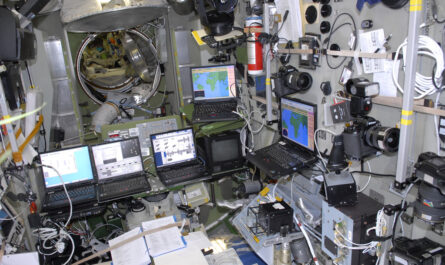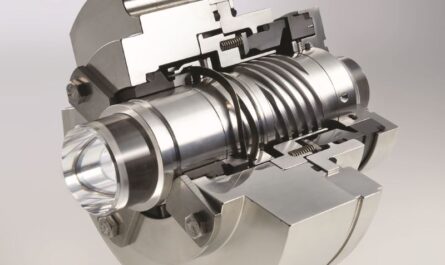 Introduction
Introduction
Landmines and unexploded ordnances continue to endanger civilian lives even decades after armed conflicts end. Clearing these deadly remnants of war through traditional manual methods is an extremely dangerous and time-consuming process. However, technological advancements are now providing safer and faster alternatives through the use of mechanical mine clearance systems. This article explores how these mechanized solutions are revolutionizing demining efforts around the world.
Advantages of Mechanical Systems
One of the major advantages of Mechanical mine clearance systems is safety. They allow deminers to locate and neutralize landmines from a safe distance without having to work in mined areas. This significantly reduces the risk of loss of life during demining operations. Traditional manual demining requires teams of specialist deminers to meticulously search sections of land using metal detectors and probes. Even experienced deminers are at risk of accidental detonations. Mechanical systems remove humans from the point of danger.
Another key benefit is speed. Whereas manual demining can clear only a small area each day, machines are able to cover much larger distances in the same time period. For instance, a single machine can clear land ten times faster than manual demining. This is crucial to remove threats to communities in a timely manner. The scale of contamination in many post-conflict countries is massive and will take centuries to clear through conventional methods alone. Mechanical assets can substantially reduce clearance timelines.
Types of Mechanical Systems
There are different types of mechanical systems used for mine clearance based on their functioning.
Vegetation Cutters – These machines are used to cut tall grass and brush that obscures landmines and debris on the ground. They have flails, tillers or rotary cutters that clear wide swathes of land quickly to facilitate further processing. Common models include the Zettel Technic and DOK-ING MV4.
Armored Combat Vehicles – Surplus tanks and armored personnel carriers are modified by removing their weapons and adding specialized attachments. Their large mass and special steel plating allow them to detonate buried mines and move over minefields safely. Examples are M60 and T55 vehicles fitted with rollers or plough blades.
Mine Flails – These consist of heavily reinforced drums fitted with numerous chains or solid steel rods. Rotating at high speeds, the flails smash into the ground detonating mines in their path. Models like the Scanjack 4004 and Hydrema 910TR have proven effective on various terrains.
Mixing / Tilling Machines – Equipped with tilling tools, these machines aerate and mix mine-bearing soil layers. This destroys the shape and positions of mines and helps detect their fragments more easily afterwards. The Caterpillar 318 and 324 mixers are employed extensively.
Sifting and Raking Machines – They comb mine-suspected areas and collect potential explosive items on their rakes and screens for disposal. The local communities can then confidently use cleared lands for living and farming. Van Leeuwen Vaatjes and other Dutch designed sifters are popular.
Applications Around the World
Mechanical demining is now routinely deployed by major humanitarian mine action programs globally. In Cambodia, machines were responsible for clearing over 80 million square meters of land between 2013-2017, aiding millions to safely return home. In Croatia, vegetation cutters helped meet NATO demining deadlines ahead of time. In Bosnia, mine flails like the Hydrema 910TR have proven their worth by clearing high impact routes quickly.
In Mozambique, mixers and tillers have reclaimed vast tracts of fertile agricultural belts contaminated by its long civil war. Afghanistan continues to struggle under vast explosive remnants from 40 years of conflict. Mechanical solutions deployed by The HALO Trust and other groups have made remote mountain villages mine-free once more. Even countries recovering from recent conflicts like Iraq and Ukraine are integrating machines into their clearance operations.
Challenges and Future Outlook
While mechanical demining offers enormous benefits, it also faces technical issues. Machines require expert operation and maintenance support which may not always be locally available in remote minefields. Terrains with abundant rocks and tree roots can damage flails and tillers. Post-clearance quality assurance also remains crucial to identify any missed mines.
However, the technologies are progressing rapidly. New machines are being designed with reinforced components for tough conditions. Digital mapping systems provide real-time clearance data for effective quality assurance. Unmanned ground vehicles operated remotely may one day clear mined areas autonomously. Commercial firms are also engineering machines specifically for humanitarian demining to aid recovery of crisis-hit nations.
With continued research and testing, mechanical systems will only become safer, faster and more efficient. Pairing them optimally with secondary manual verification will mechanization become the leading approach for global mine action. This will in turn propel achievement of mine ban treaty goals and help communities worldwide reclaim millions of hectares of contaminated lands from the scourge of landmines.
Conclusion
In summary, Mechanical mine clearance systems provides a paradigm shift from traditional manual demining through robotics and heavy machinery. While technical improvements are ongoing, machines have already undeniably enhanced the safety and productivity of clearance operations on a large scale. With advanced technologies and optimal multi-method approaches, mechanical demining promises to revolutionize the human fight against explosive remnants of war for years to come.
*Note:
1. Source: Coherent Market Insights, Public sources, Desk research
2. We have leveraged AI tools to mine information and compile it



